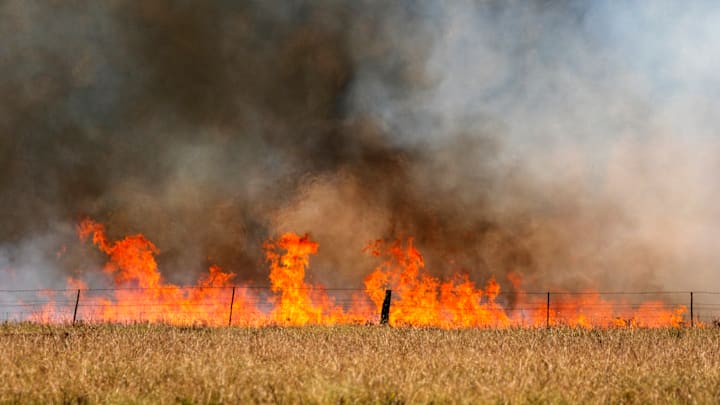Red flags have been used to signal danger since at least the 1700s. If you see one on the beach, for instance, be wary of high surf and/or rip currents in the ocean. But a “red flag warning” in regard to weather indicates a different kind of threat: fire.
What Is a Red Flag Warning?
Basically, it means conditions are ideal for a fire to break out and spread: the temperature is high, the humidity is low, and it’s windy.
The National Weather Service, the arm of the National Oceanic and Atmospheric Administration behind this and other kinds of weather alerts, has really specific criteria for determining when a red flag warning is necessary.
“Relative humidity of 15 percent or less combined with sustained surface winds, or frequent gusts, of 25 mph or greater. Both conditions must occur simultaneously for at least three hours in a 12-hour period,” the NWS website explains. Dry thunderstorms—those that generate very little rainfall—are another key risk factor. Other details that the NWS may take into account include the “first significant lightning occurrence after a hot and dry period,” a cold front involving strong winds, an “abrupt wind shift,” and a long-term drought.
As CBS News reports, red flag warnings are most common from February through April and October through mid-December. They’re often preceded by a “fire weather watch,” which essentially signifies that red flag warning conditions could develop in the next few days.
What to Do During a Red Flag Warning
So what should you do if you see a red flag warning in your weather app of choice? For one thing, definitely don’t toss a cigarette or match out of your car window, where it could easily “ignite dry grass on the side of the road and become a wildfire,” the NWS warns. You should also refrain from mowing a very dry lawn or driving a car through tall, dry grass, per the International Association of Fire Chiefs [PDF], since a spark from the machinery could set fire to the groundcover.
Make sure you’re adhering to any local restrictions or bans on setting fires of your own. If you are allowed to have an outdoor fire, never leave it unattended; and fully extinguish it—ashes and charcoal included—with lots of water.
[h/t CBS News]
